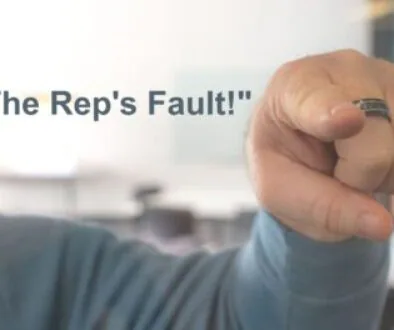Don’t Blow It When Selling a New Technology in Medical Device Sales
Have you ever approached a healthcare customer to present a new technology? You feel a strong level of confidence; after all, your competition doesn’t have anything like it. You are excited and you expect your customer to be excited too.
You tell the customer, “I’ve got something new to show you that will knock your socks off! It uses a new technology that just received FDA approval and you’re going to love it. Here, let me show it to you.”
The customer solemnly listens as you describe your new gizmo. The look on his face suggests that he has some concerns or questions, yet he remains quiet. You’re starting to realize that he is not as excited as you are.
You finish describing the new technology, new features, and how the customer and his patients could benefit. You smile, look the customer in the eye and ask, “What do you think?”
This is the point where medical sales representatives start to lose their enthusiasm. It’s because of the responses they frequently hear.
“Come back when you have five-year follow-up!”
“Who else in town is using it?”
“Very interesting. Thanks for showing it to me.”
“Show it to me again after some of my local colleagues have used it on a couple of hundred patients.”
“Interesting, but what I have is working.”
“Thanks. I will keep it in mind.”
What just happened to your excitement? It died when you realized that the customer has little or no interest. Before you throw your samples into the trunk and go back to selling your old tried and true, take a moment to understand how healthcare customers consider products using new technologies versus how you expect them to.
Salespeople become bored selling the same product and technologies over and over. It’s fun to have something new to talk about, especially when it offers a solution where one has not been available. You expect the innovation to be as welcome as water in the desert. You have an opportunity to please the customer, help the patient, and make some money. Who wouldn’t be excited?
Understand where the customer is coming from—he is already using a product with some level of confidence. That confidence was likely derived over time, often after a learning curve that added stress to the customer’s life. Finally, the product has become integrated into his practice and he no longer needs to think about it because it’s working without problems.
Healthcare customers don’t want to think about products—they just want to do their jobs. The only time they think about products is when there is a problem with what they are using or when they are learning to use a new product. You’re asking them to think about a product when you show up, and that doesn’t make you popular.
When you walk into the office or clinic with your new technology, you represent uncertainty and risk, as well as the pain of change. The quickest and easiest way for the customer to make that pain go away is to just say, “No.” This is what you will hear almost 100% of the time, unless you learn how to sell in such a way that you provide some non-threatening opportunities for customers to say “Yes.”
New technology requires conceptual selling, that is, you need to set the product aside and get the customer to buy into a new way of thinking. Sell the concept first and the product second. Familiarize the customer with the technology and allow him to brainstorm ways that he might use it on his own. When it’s the customer’s idea, he will be motivated to learn more. However, if you’re trying to shove your new technology down his throat, you’re making yourself as welcome as an IRS tax audit!
When you’re selling a new technology, sell the concept first. Help the customer to explore how and why the technology was developed and how colleagues are using it. Anticipate the objections the customer might have and address them proactively when discussing the concept. The time to move from selling the concept to selling the product is when the customer invites you to, either by saying, “Tell me about your product,” or by telling or asking you about how he might use the new technology.
If the customer can’t conceptualize the value of new technology, he won’t buy the associated product. Sell the technology first and only sell your product when the customer has indicated either acceptance or interest in applying the technology in his practice. You’ll be perceived as a medical sales professional who delivers innovative solutions and not as another product-pusher who is just out to make a sale.
Overcome your toughest medical sales obstacles with my new Online Medical Sales eTraining that utilizes the new PAIN SONARTM Medical Sales Process. Learn more…


